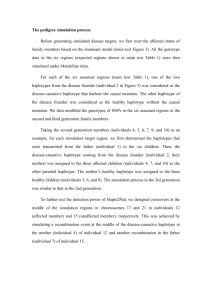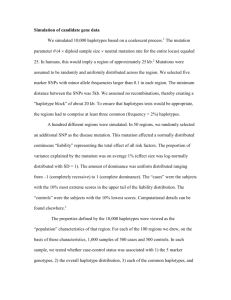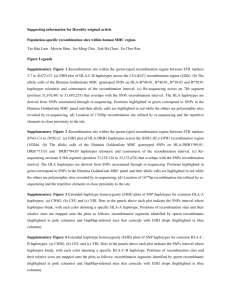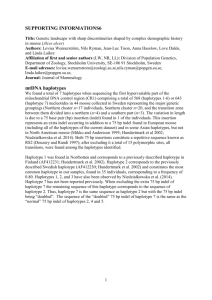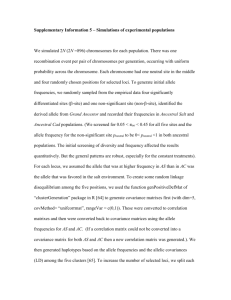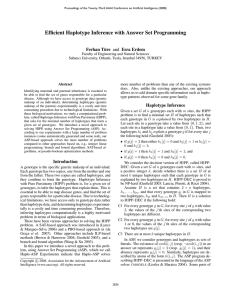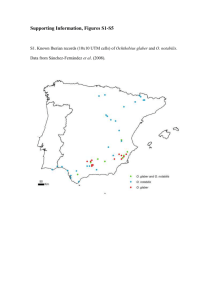Supporting information Genetic linkage between S
advertisement
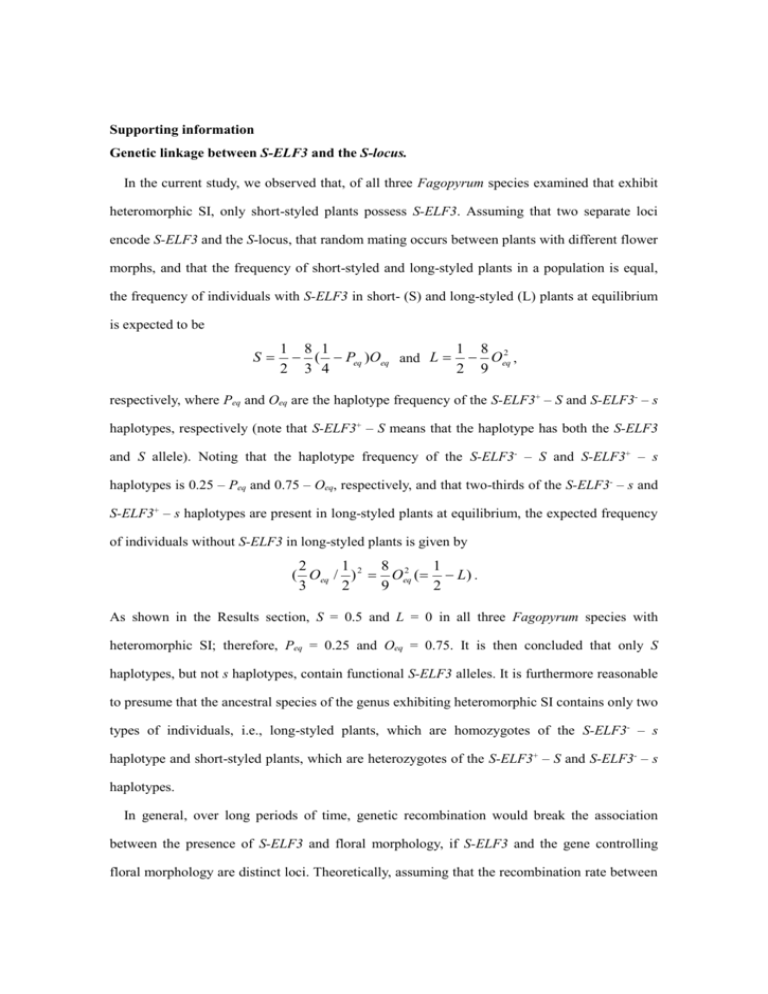
Supporting information Genetic linkage between S-ELF3 and the S-locus. In the current study, we observed that, of all three Fagopyrum species examined that exhibit heteromorphic SI, only short-styled plants possess S-ELF3. Assuming that two separate loci encode S-ELF3 and the S-locus, that random mating occurs between plants with different flower morphs, and that the frequency of short-styled and long-styled plants in a population is equal, the frequency of individuals with S-ELF3 in short- (S) and long-styled (L) plants at equilibrium is expected to be S 1 8 1 1 8 ( Peq )Oeq and L Oeq2 , 2 3 4 2 9 respectively, where Peq and Oeq are the haplotype frequency of the S-ELF3+ – S and S-ELF3- – s haplotypes, respectively (note that S-ELF3+ – S means that the haplotype has both the S-ELF3 and S allele). Noting that the haplotype frequency of the S-ELF3- – S and S-ELF3+ – s haplotypes is 0.25 – Peq and 0.75 – Oeq, respectively, and that two-thirds of the S-ELF3- – s and S-ELF3+ – s haplotypes are present in long-styled plants at equilibrium, the expected frequency of individuals without S-ELF3 in long-styled plants is given by 2 1 8 1 ( Oeq / ) 2 Oeq2 ( L) . 3 2 9 2 As shown in the Results section, S = 0.5 and L = 0 in all three Fagopyrum species with heteromorphic SI; therefore, Peq = 0.25 and Oeq = 0.75. It is then concluded that only S haplotypes, but not s haplotypes, contain functional S-ELF3 alleles. It is furthermore reasonable to presume that the ancestral species of the genus exhibiting heteromorphic SI contains only two types of individuals, i.e., long-styled plants, which are homozygotes of the S-ELF3- – s haplotype and short-styled plants, which are heterozygotes of the S-ELF3+ – S and S-ELF3- – s haplotypes. In general, over long periods of time, genetic recombination would break the association between the presence of S-ELF3 and floral morphology, if S-ELF3 and the gene controlling floral morphology are distinct loci. Theoretically, assuming that the recombination rate between the two loci is r per generation ( 0 r 0.5 ), the expected frequency of short-styled (Sx) and long-styled (Lx) individuals with S-ELF3 after x generations is given by Sx 1 1 1 1 (1 4 p)(1 4 p 4q) and Lx (1 4q )(1 4 p 4q ) , 2 4 2 4 respectively, where p (9 10r )( k1x k 2x ) 1 3 , (k1x k 2x ) 16 32 64(k1 k 2 ) q (3 14r )( k1x k 2x ) 1 1 , (k1x k 2x ) 16 32 64(k1 k 2 ) and 1 r 1 r 9 r k1 ( ) ( )( ) , 4 2 4 2 4 2 1 r 1 r 9 r k 2 ( ) ( )( ) . 4 2 4 2 4 2 As illustrated in Figure S6, even a low rate of recombination is expected to break the association between the absence/presence of S-ELF3 and the floral dimorphic morphology over the history of the genus Fagopyrum. For example, if the two genes were separated by 10 kb and located at a region where recombination is highly suppressed (0.018 cM/Mb), such as that in the Arabidopsis S-locus (1), r would have a value of 1.8 x 10-6, and the association found here would not be observed. Taking this into consideration, we conclude that S-ELF3 is located at the S-locus. References 1. Kamau E, Charlesworth B, Charlesworth D (2007) Linkage disequilibrium and recombination rate estimates in the self-incompatibility region of Arabidopsis lyrata. Genetics 176: 2357-2369.

